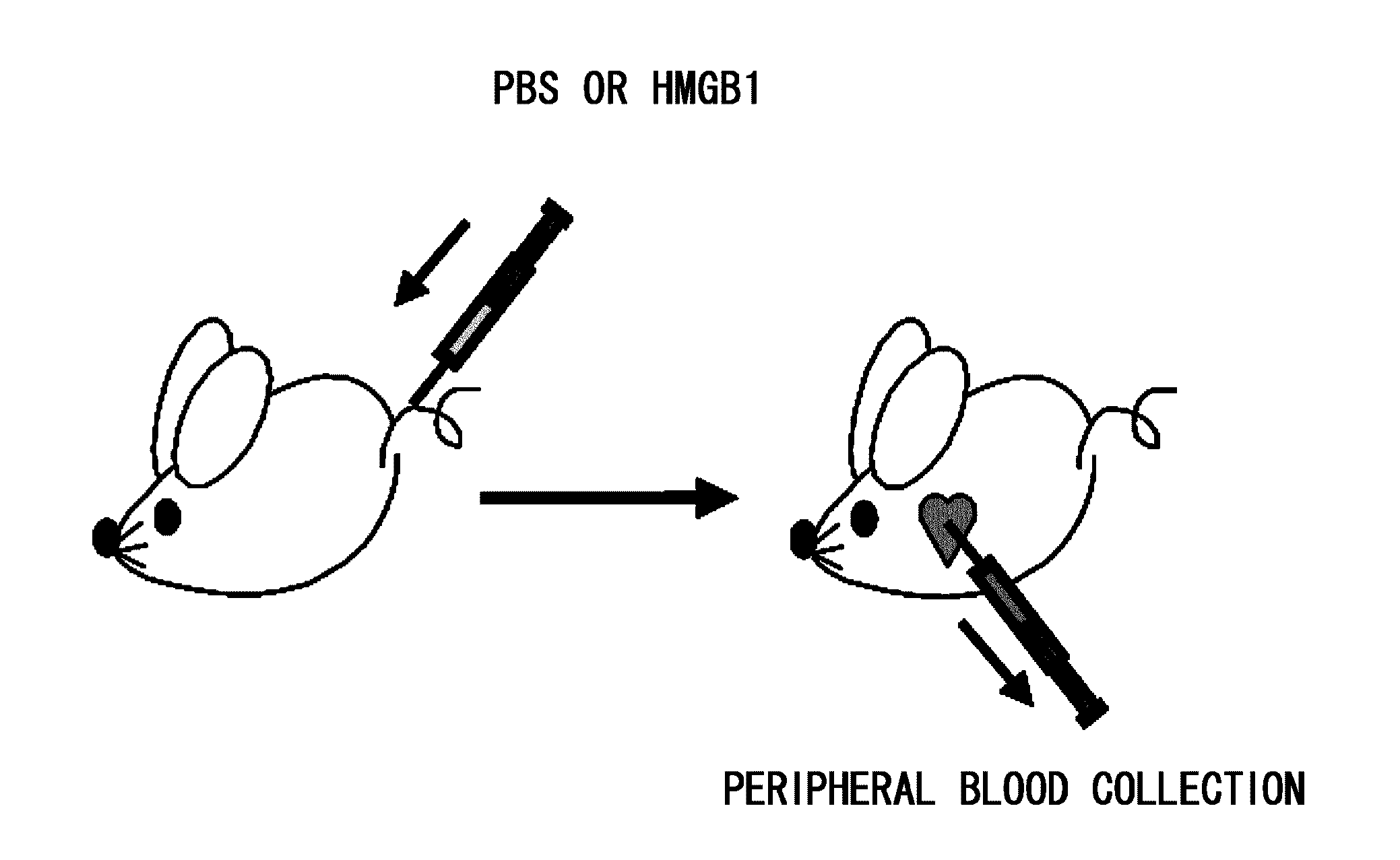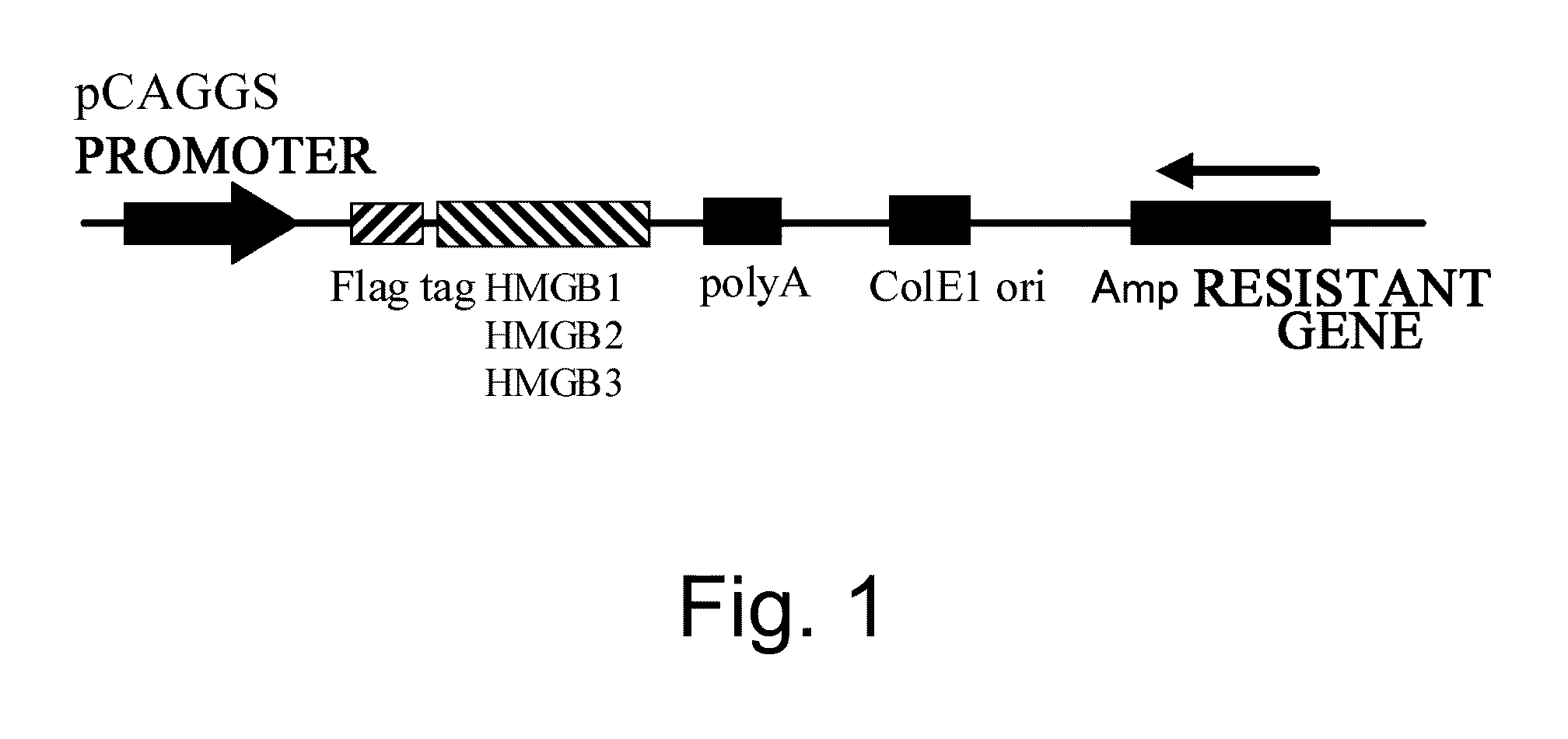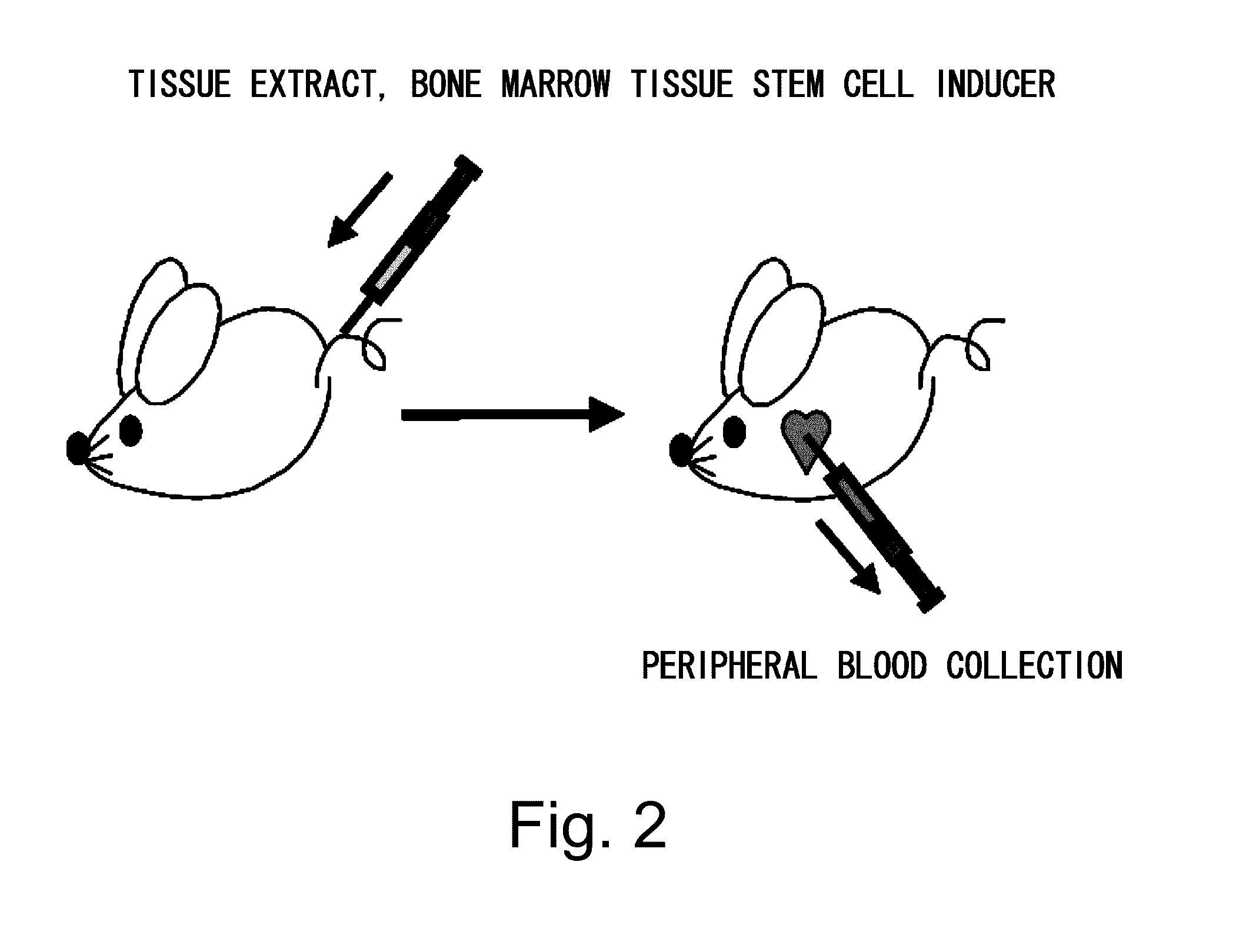Agent for Recruitment of Bone-Marrow-Derived Pluripotent Stem Cell Into Peripheral Circulation
a technology of bone marrow and stem cells, applied in the direction of drug compositions, peptides, tissue culture, etc., can solve the problems of difficult removal of neuroglioma that has developed from cerebral parenchymal cells, bone marrow-derived stem cells, and difficult mobilization to damaged tissues, etc., to achieve simple and efficient
- Summary
- Abstract
- Description
- Claims
- Application Information
AI Technical Summary
Benefits of technology
Problems solved by technology
Method used
Image
Examples
example 1
[0105]Purpose: Mobilization of bone marrow tissue stem cells to peripheral blood using bone marrow-derived tissue stem cell-inducing factors in skin tissue extract
[0106]Methods: To achieve the above purpose, a study was conducted by the method described below.
[0107](1) Preparation of bone marrow-derived tissue stem cell-inducer. Free skin pieces isolated from 25 neonatal mice (two days old) were immersed in 25 ml of phosphate buffered saline (PBS), pH 7.4. After 24 hours of incubation at 4° C., the sample was centrifuged at 440 G at 4° C. for ten minutes to remove the tissue. The supernatant was collected as skin extract (SE).
[0108]Meanwhile, RNA was extracted from neonatal C57 / B16 mice skin using Trizol (Invitrogen), and then cDNA was synthesized using the SuperScript III cDNA Synthesis Kit (Invitrogen). Polymerase chain reaction (PCR) was carried out using this cDNA as a template to amplify HMGB1 cDNA. The HMGB1 cDNA was inserted into an mammalian cell protein expression plasmid v...
example 2
[0112]Purpose: To test whether mesenchymal stem cells are mobilized to peripheral blood by intravenous administration of recombinant HMGB1 protein.
[0113]Methods: C57BL6 mice (eight to ten weeks old, male) were administered with 400 μl of physiological saline containing 100 μg / ml recombinant HMGB1 protein (40 μg of HMGB1) or 400 μl of physiological saline alone through the caudal vein. After 12 hours, peripheral blood was collected from the mice. The blood samples were diluted with PBS to a total volume of 4 ml. The diluted blood samples were overlaid onto 3 ml of Ficoll-Paque Plus (GE) placed in centrifuge tubes. The samples were centrifuged at 400 G at 18° C. for 40 minutes. The middle layer containing mononuclear cells was transferred to a fresh centrifuge tube, and 45 ml of PBS was added thereto. The tube was centrifuged at 800 G at 18° C. for five minutes. The supernatant was removed. Again, 45 ml of PBS was added, and the tube was centrifuged at 800 G at 18° C. for five minutes...
reference example 1
[0116]Objective: Identification of the HMGB1 family in the skin extract and examination of bone marrow mesenchymal stem cell-inducing activity
[0117]Methods: Whether or not the neonatal mouse skin extract contained the HMGB protein family was confirmed using the Western blot method. Free skin pieces from 400 neonatal mice were immersed in 400 ml of physiological phosphate buffer solution (PBS; pH 7.4) and the solution was incubated at 4° C. for 24 hours. To remove the tissues, the samples were centrifuged at 440 G at 4° C. for 10 minutes and the supernatant was collected as skin extract. Ten μl of the skin extract obtained was used as a sample and subjected to SDS-PAGE electrophoresis. The proteins separated within the gel were transferred onto a PVDF membrane using a blotting device (ATTO). The membrane was incubated with PBS containing 3% skim milk and 0.1% Tween20 (S-T-PBS) at room temperature for one hour, and then was allowed to react with each of rabbit anti-mouse HMGB1 antibod...
PUM
| Property | Measurement | Unit |
|---|---|---|
| immersion time | aaaaa | aaaaa |
| immersion time | aaaaa | aaaaa |
| immersion time | aaaaa | aaaaa |
Abstract
Description
Claims
Application Information
 Login to View More
Login to View More - R&D
- Intellectual Property
- Life Sciences
- Materials
- Tech Scout
- Unparalleled Data Quality
- Higher Quality Content
- 60% Fewer Hallucinations
Browse by: Latest US Patents, China's latest patents, Technical Efficacy Thesaurus, Application Domain, Technology Topic, Popular Technical Reports.
© 2025 PatSnap. All rights reserved.Legal|Privacy policy|Modern Slavery Act Transparency Statement|Sitemap|About US| Contact US: help@patsnap.com



